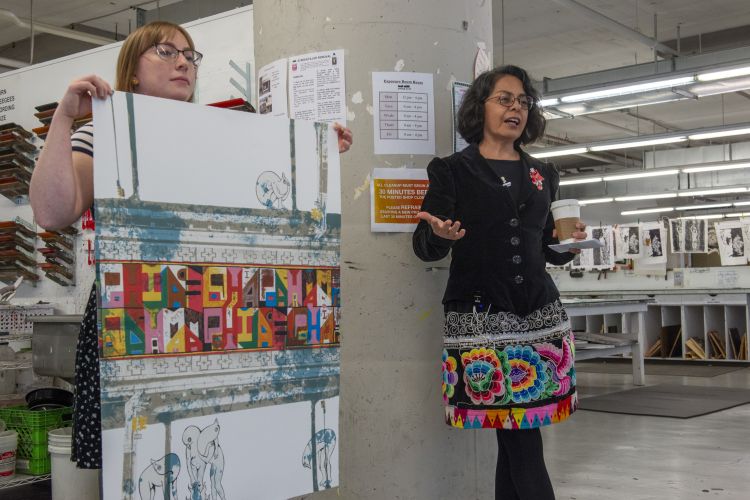STORIES FROM PAFA
William Wetmore Story’s Marble "Jerusalem" Moves for First Time in 30 Years
A story from Lily Feinstein, Virtual Summer Intern through the Association of Historians of American Art, and rising senior in Curatorial Studies at Moore College of Art & Design:
This past month's monumental move of William Wetmore Story’s Jerusalem is not the first time this nearly 5000 pound statue has been relocated.
First arriving to the PAFA galleries as a long-term loan in the 1870s, the marble would later travel to the Philadelphia Memorial Park until 1986 when it was gifted into the permanent collection by Mr. and Mrs. Arthur Klein. After some conservation work, in 1992 Jerusalem was placed in Gallery 1 next to Joseph A. Bailly’s sculpture Paradise Lost. This is where Jerusalem would stand until it was moved last month.
Moving Jerusalem is no easy task. Weighing nearly 3,600 pounds, with a pedestal that is roughly between 2,300-2,600 pounds, and made of breakable marble, the statue risks damage if not handled with the required care and expertise. How does any museum go about moving these huge, important artworks? It turns out tried-and-true sometimes wins out over new tech. In both 1992 and last month, a gantry crane lifted the pedestal and statue onto a moveable palette. The finishing touches included raising the podium onto shims to make sure that the next time it needs to be moved, it will be just a little bit easier.
Why would a museum go through all this trouble to move one statue? For the exhibition "Women In Motion," which explores the artistic networks made by women artists from 1805 to the second world war, Dr. Anna O. Marley, PAFA’s curator of historical American art explained: “We wanted to open the show with the first work of art that PAFA ever purchased by a woman artist, [New England Woman by Cecilia Beaux] which was purchased in 1896...But that was not the only reason.” Dr. Marley said that moving Jerusalem now was also helpful because “Jodi Throckmorton is creating a major temporary exhibition called Rising Sun which is opening next year, and part of the project is to move our monumental marble sculptures. So we need[ed] to do a practice run to see how it would work!”
Watch the process in fast motion below!
Move from Philadelphia Memorial Park in Frazier, PA 1986
1992 Installation into Museum
2021 Move to Make Way for "Women in Motion" Exhibition
We're so excited you're planning to visit PAFA!
Make time for art — visit us Thursday to Sunday.
Before reserving your tickets, please review helpful information about museum hours, accessibility, building access, and special admission programs.
If you have any questions, feel free to reach out to us at visitorservices@pafa.org — we’d love to help!













